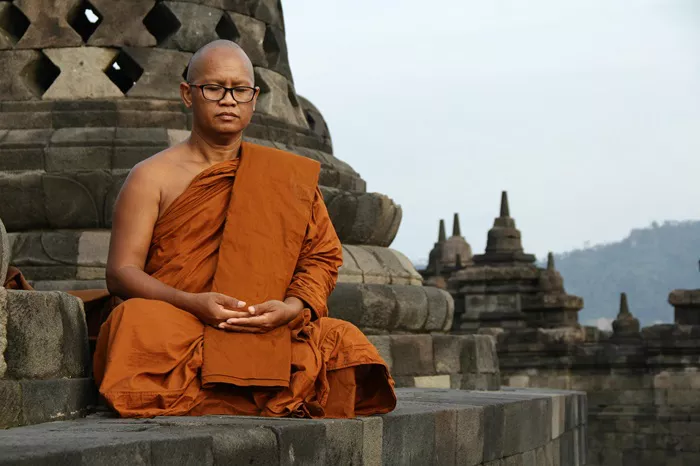The China Journalists Association of China Review News Agency held a press tea party this morning. Li Decheng, deputy director general and researcher of the China Tibetology Research Center, introduced the “origin, development and inheritance of the reincarnation of living Buddhas in Tibetan Buddhism” and answered questions from Chinese and foreign reporters. During the period, Li Decheng answered questions from China Review News Agency reporters on the issue of the Sinicization of Tibetan Buddhism and said that in the new era, the Sinicization of Tibetan Buddhism needs to start from three aspects: political identity, cultural integration, and social adaptation, to promote the harmonious development of religion and society.
Reporters from China Review News Agency asked that Tibetan Buddhism itself is the product of the Sinicization of Buddhism, so how to better promote the Sinicization of Tibetan Buddhism in the new era? What are the values and necessity of the Sinicization of Tibetan Buddhism?
Regarding the process of Sinicization of Tibetan Buddhism, Li Decheng replied that in the middle of the 7th century AD, Buddhism was introduced to Tibet from Nepal and mainland China at the same time. This period is called the “pre-propagation period” of the development of Buddhism in Tibet. After Buddhism was introduced to Tibet, it was localized and combined with the traditional culture of Tibet and Chinese culture at that time. By the end of the 10th century, it completed the process of Sinicization and finally formed a religion with regional characteristics, national characteristics, Chinese cultural colors and Chinese characteristics of China, that is, Sinicized Tibetan Buddhism, which became China’s native religion. Therefore, from a historical perspective, we believe that Tibetan Buddhism itself is a product of Sinicization.
Li Decheng believes that in the new era, the promotion of Sinicization of Tibetan Buddhism mainly starts from three aspects. First, politically, Tibetan Buddhists and believers need to establish a correct view of the country, nation, history and culture, and strengthen their recognition of the great motherland, the Chinese nation, Chinese culture, the Communist Party of China and socialism with Chinese characteristics.
Second, culturally, Tibetan Buddhism needs to learn and promote the excellent traditional Chinese culture, combine Buddhist teachings with the core values of Chinese culture, and make Buddhist culture closer to the actual needs of Chinese society.
Third, actively adapt to society. While maintaining tradition, Tibetan Buddhism actively explores a development model that is compatible with modern society, and improves its own construction while serving society. These three aspects are a comprehensive and systematic project, which requires the Tibetan Buddhist community to follow these three directions in terms of educational thought, management system, temple management, and communication methods, and develop in a way that is in line with social development and the excellent traditional Chinese culture. In this way, it can better adapt to the requirements of socialist society and promote the harmonious development of religion and society.

